What do Cadets go through in the U.S. Air Force Academy?

The Air Force Academy is a highly prestigious and competitive 4-year program designed to take the brightest individuals and turn them into future officers and leaders of the U.S. military. Make it through the 4 years, and you’re officially a U.S. Air Force or Space Force officer. If only it were that easy!
Not only is it extremely difficult to get into, with only 1 in 10 applicants making it through, but from year 1 to year 4, cadets will be pushed to their physical, mental, and emotional limits. And only if they make it through do they earn the right to commission as United States Military Officers.
But is the Air Force Academy really all it's cracked up to be? Is it really as tough as they say? And what do cadets have to go through to earn themselves a commission as a United States Air Force or Space Force officer? Keep reading, and we’re going to answer all of those questions for you, and much more.
TABLE OF CONTENTS
AIR FORCE ACADEMY: FIRST YEAR (BASIC & FOURTH CLASS CADETS)
AIR FORCE ACADEMY: SECOND YEAR (THIRD CLASS CADETS)
AIR FORCE ACADEMY: THIRD YEAR (SECOND CLASS CADETS)
AIR FORCE ACADEMY: FOURTH YEAR (FIRST CLASS CADETS)
AIR FORCE ACADEMY: ADMISSIONS

The journey to graduating from the Air Force Academy begins with its highly selective admissions process. The Air Force Academy boasts a super low acceptance rate, which was a whopping 12% in 2022. Applicants from around the country compete for a limited number of slots for each incoming class, and the overall process is daunting and extensive, which should come naturally for the #3 ranked public school in the U.S.
Although the Academy is open to anyone between the ages of 18-23, a prospective cadet’s process typically starts in the springtime of their junior year in high school. Every year in the spring, the Air Force Academy will open its applications portal. Applicants will need to provide a bunch of information and conduct a series of evaluations in order to submit a proper application. This will generally consist of grades, a DoD medical evaluation, SAT/ACT scores, essay question prompts, and a congressional or senatorial nomination. There’s also a physical fitness test, which consists of a basketball throw, pullups, shuttle run, situps, pushups, and a one mile run. Grades, extracurriculars, and other important aspects that show the applicant’s true character are very important in this process.
Once an applicant submits their application, it can take anywhere from 6-8 months to hear back on whether they’ve been accepted. This can be a nail-biting process for some, and as you’ve already learned, a majority will not be selected.
Unfun fact, if an applicant is rejected, it’s not the end of the road for them. There are other ways to get accepted into the Air Force Academy, such as through the USAFA Prep School or Falcon Scholarship - but we won’t be getting into that. Those currently serving active duty in the Air Force who apply will have the same application process as everyone else, plus they will also need a commander’s recommendation at their current unit. Roughly 70-90 slots are reserved for active duty airmen in each admission cycle.
The lucky ones who are accepted, but more specifically appointed, into the academy will now be called appointees. There’s a lot of paperwork and other stuff to be handled here before they report to the Academy, but they’ve officially got in and will soon be reporting for their First Year.
AIR FORCE ACADEMY: FIRST YEAR (BASIC & FOURTH CLASS CADETS)

The first year in the United States Air Force academy, also known as the Doolie year, is what many would consider to be one of the toughest years. Doolie comes from the ancient Greek Doulos, the servant class of society, which is a similar theme to how other academies call their freshmen Plebes. Newly arriving cadets will experience an intense culture shock when they report to the academy. Day 1, officially known as In-Processing Day, introduces cadets to a taste of the difficult experience that is to come. I-Day is a shock and awe event, full of yelling, paperwork, and administrative stuff - all designed to overwhelm the basic cadets. In fact, the cadets are given the opportunity to back out before the training even begins in a defining moment where they are placed on a bus and told to either commit from this point forward or stay on the bus if they don’t have what it takes. Those who get off the bus are now in it to win it and have kicked off Basic Cadet Training.
Basic Cadet Training is a 6 week program designed to transform civilians into Air Force Academy cadets. Think of it like a boot camp people have to go through to join the military, except this is one for joining the Air Force Academy. The “drill sergeants” that run the show for them are a mix of Military Training Instructors from the Air Force and upperclassmen Cadets.
BCT is split into two parts: First Beast and Second Beast, which are 3 weeks each.
During First Beast, basic cadets spend a lot of time learning military customs and courtesies, and other various information from their contrails, which is a mini-book of knowledge that cadets must carry with them throughout the entirety of their first year. Their contrails contain information ranging from leadership, ranks, planes, quotes, and general Air Force knowledge.
In addition to doing PT every day and learning a bunch of new information, basic cadets are expected to run tight ship. There will be frequent room inspections where basic cadets must keep their room in a super specific condition, all the way from how their bed is made to how they put their clothes in their closets. There’s a term they have for this, called “SAMI”, which stands for Saturday AM Inspection. Not only will they have to keep their rooms in SAMI status for Basic Cadet Training, but they’ll have to do it for the whole first year. The instructors will also bang on the cadets’ doors to wake them up in the morning, force them to eat at attention during meals, make them run or march everywhere, turn their corners, and if they’re not actively doing something, they'll be expected to be studying from their contrails at attention. Pretty much anything to make their lives slightly more miserable. The best part? A lot of this stuff continues throughout their entire first year at the academy.
Between the first and second BCT, the cadre will take the basic cadets to a rodeo to rest easy for a little bit, but then they’re right back into action. Second BCT is where they’ll start to receive more hands-on and cool military training. Most of the second BCT is spent in the field at Jack’s Valley, which is a compound full of obstacle courses and areas designated for field training. The class will march down to the compound and live in Conex boxes for the next few weeks.
You can think of Jack’s Valley as a gigantic field exercise where cadets will be put through a series of tests, leadership exercises, and PT events. Some of the key highlights from these are the assault course, obstacle course, and confidence course. The assault course is often considered the most challenging of the bunch because there’s a lot going on at once. During the assault course, cadets will don their helmets, carry a rifle, and must undergo obstacles all while having M240 blanks shot around them, getting screamed at, going through lots of smoke, and doing high knees and burpees. It’s kind of like organized chaos.
The obstacle course is like a typical military obstacle course, but not as chaotic as the assault course. Then there’s a confidence course and Leadership Reaction Course. Cadets will be placed in different scenarios and must figure out how they will accomplish the mission at hand.
The goal of these courses is to foster teamwork, ingenuity, and leadership skills. Beyond the courses at Jack’s Valley, cadets will also get tear gassed, qualify on their rifles, and do lots and lots of PT.
At the end of Jack’s valley, basic cadets will all march back for one more week of basic, and if they make it through that last week, they will celebrate the completion of BCT with what is known as Acceptance Day. On Acceptance Day, everyone’s family comes out to watch the basic cadets put on their shoulder boards and officially become a Fourth Class Cadet at the Air Force Academy, more commonly known as “Doolies”.
With BCT over, it’s now time for the Doolies to begin their college education. During the first year, all Doolies are pretty much taking the same classes. As it goes with all bachelor’s programs, there’s a lot of general education classes to get out of the way first. Because every graduate of the Air Force Academy will receive a Bachelor of Science degree in their respective major, they can expect to take a lot of STEM classes. In total, there’s 32 different majors for cadets to choose from, so they will all be able to move onto their own stuff at some point. Cadets can declare their major as early as they want, but they’ll have until their sophomore year to do so.
A typical day during a cadet’s first year at the Air Force Academy consists of classes from 7:30-15:30 with lunch. After class, they will practice with their club, hobby, or sport. There’s a whole slew of options for extracurriculars, so there’s something for everyone. In the mornings, doolies have “minutes”, which is a memorized speech given every morning that counts down the number of days until graduation, current news articles or events, and reciting the breakfast, lunch, and dinner menu. Also, each week the first year cadets receive a knowledge test where they’re quizzed on knowledge from their Contrails. From time to time, doolies will get weekends off, but they won’t be able to leave base until parent’s weekend, which is roughly two months into the school year. Besides that, being a doolie is kind of like being a college student, with the added bonus of your time being accounted for 24/7 except when you’re sleeping or studying. There will be plenty of military training and PT outside of class to keep the first years busy.
Near the end of their first year, something special happens called "Recognition." It is a culminating event that gives an opportunity for the Doolies to earn the respect of the upperclassmen. During their whole first year, they were only considered cadets by the Air Force Academy, but after Recognition, the upperclassmen officially recognized them as cadets too.
After Recognition, things become way more relaxed for the newly recognized cadets. For example, they can wear civilian clothes when they’re off duty. They also don't have to run everywhere anymore and can walk at an average pace. Overall, they get a lot more freedom. Completing the first year is a pretty cool milestone in an Air Force Cadet’s journey! They’ve made it through the initial hump and are ready to tackle the challenges of their Second Year.
AIR FORCE ACADEMY: SECOND YEAR (THIRD CLASS CADETS)

The second year at the Air Force Academy begins in the summer after the freshman year. Instead of having to go through a boot camp like their first year, the summers are split into three different blocks that are three weeks each. Each block has a certain purpose. There’s one for vacation, one for military training, and another one for leadership - but it’s all pretty flexible because cadets can also do summer school or internships should they choose. What’s really unique about the Air Force Academy is that cadets are offered some amazing training opportunities and stuff that isn’t available to anyone else.
But before they can do anything else, all cadets will have to go through CST during their second summer, which stands for Combat Survival Training. CST is run by cadet cadre as well as active duty SERE specialists. At CST, cadets learn survival techniques, medical care, land navigation, water survival, and much more.
After CST, cadets will have the opportunity to take various airmanship classes. This is important because it gives them a firsthand look at their potential career and will help them figure out what they like the best. Additionally, they can get opportunities to attend a real military training school, such as jump school. They’ll be able to learn about and operate UAVs and drones, fly with pilots, or do something with Space if they’re wanting to commission into the Space Force.
Once cadets are finished with the summer, they'll begin their second year of school. As cadets begin their sophomore, or 3-degree year, they will be placed with a new group of cadets different from their first year. This grouping of cadets is officially known as their squadron. The assigned squadron becomes their permanent squadron for their remaining three years at the academy. This change is known as the “upperclassman shuffle.” Additionally, the second year cadets will be assigned a supervisory role and be directly in charge of one or two doolies, giving them even more leadership experience. All upper class cadets will receive jobs within their squadron, such as leadership, training, operations, support, etc., and are expected to fulfill their job duties on top of everything else.
During the fall semester, the class will select and honor their class exemplar, who becomes the honorary class leader and namesake. This has been a tradition since the Class of 2000, where each class has chosen someone who “exemplifies” the type of person the class wishes to emulate. The cadets celebrate this selection at a formal Exemplar Dinner with their graduated Legacy Class members in attendance.
Aside from the military instruction, the day-to-day from here on out will be pretty similar but much more relaxed when compared to what the Doolies have to deal with. Cadets will go to class, attend their extracurriculars, and PT. There’s more freedom, but there will still be training days on Saturdays, and no matter the year, all cadets have to attend the home football games.
At some point during the sophomore year, there will be a thousand days left until graduation, which all third class cadets will celebrate. Completion of the second year is a huge milestone because they’ve already reached the halfway point in the Academy, and are ready to begin their third year.
AIR FORCE ACADEMY: THIRD YEAR (SECOND CLASS CADETS)

The third summer at the Air Force Academy is structured much like the second summer, except there will be much more emphasis on leadership opportunities and a deeper dive into the Air Force career fields due to graduation being less than two years away. At this point, it’s important for cadets who have yet to choose a career field to hone in on their interests.
Instead of attending CST, cadets will have the opportunity to work the course as cadre, which is essentially like an instructor. Many Second Class Cadets work BCT over the summer as well. They’ll also be able to help run the parachute team, the glider team, and the other programs that the second years will attend.
Another important part of the third summer is attending Operation Air Force. OPS Air Force is a 3 week trip where cadets travel to an Air Force base to shadow someone in the Air Force of their choosing. Cadets will typically shadow someone in a career field that they plan on joining, such as Air Force Special Warfare, Pilots, or whatever else is available. Many cadets get backseat rides in fighter jets and get other cool experiences.
After a cadet attends a leadership block and OPS Air Force, they can choose to go on leave, take a summer course, or fill in wherever they want to.
Once the summer is finished, there is a huge milestone that the Cadets must attend, called the Commitment Dinner. Commitment Dinner is usually held the day before classes start. Once the cadets return to the Academy for their second-class year, they incur the financial or active duty “commitment” for their education should they depart the Academy prior to graduation.
In other words, if someone backs out at any point before the commitment dinner, they can leave free of charge and have no debts to the military. However, at any point after commitment, the cadet is locked in, and if they choose to leave the academy or get kicked out, they have the mandatory options to either enlist in the Air Force or repay every last penny, and it ain’t cheap. It is not uncommon to see people “step left” and move on from the Academy. For those who stay, the cadets will receive a coin to honor the event and continue on with their third year.
Additionally, around this time, the cadets will be offered the opportunity to choose to commission into the Air Force or Space Force. Those who choose to go into the Space Force will not be able to change their minds afterwards. Since the Space Force is a brand new branch, the way the Academy might deal with this may change with time, but understand that it is presumed that all cadets are commissioning into the Air Force unless they indicate otherwise.
Once the school year starts, the cadets will find themselves in classes that focus more on their major, similar to what you’d expect of a junior in college. Cadets in their junior year will begin to take on more leadership responsibilities as they are now considered NCO’s, or non-commissioned officers, amongst the class ranks. NCO’s in the military can be viewed similarly to managers.
At this point, the school year will be pretty similar to the previous year, except for some extra freedoms the cadets might get because they’re getting higher on the totem pole. But no matter how far into the academy cadets are, there will always be military training and other responsibilities to deal with.
The cadets will go through their third year of the academy much like the previous year. As a common trend throughout every year, they will attend class, go to their extracurriculars, and do PT and military training. Additionally, at some point during this year, all second class cadets will put in preferences for jobs, but they won’t find out until next year which one they get.
At the end of the third year, a formal ball is held exclusively for the junior cadets called Ring Dance. This is a huge moment for cadets because this is where they receive their class rings and unveil their class crest. It’s a pretty cool event, and the class rings can be highly customized to a cadet’s liking. There are tons of options, but they can cost anywhere from $500 to $5,000 or more. The rings are traditionally placed in a glass of champagne and caught in the teeth following a toast.
Air Force Academy rings are unique because they are made with white gold instead of the yellow gold used at other service academies. Each class has a say on how they are designed, but every ring must include elements from the Class of 1959’s crest, which includes the class number, class year, and the Polaris Star and Eagle. For those who might be nervous about going to the ring dance without a date, make sure you have that figured out before the commitment dinner. All jokes aside, after the ring dance, the cadets will move onto their Fourth Year.
AIR FORCE ACADEMY: FOURTH YEAR (FIRST CLASS CADETS)

The fourth and final summer for cadets in the Air Force Academy will be much like the last two summers, except the leadership roles and responsibilities have greatly increased due to their class ranking. In the fourth year, where cadets are known as “firsties”, they are now considered officers within the Cadet ranking. This means that they are leading the squadron, and have a lot more to deal with at this point.
The summer will have them working Basic Cadet Training as cadre, taking leave, summer courses, internships, or whatever they need to satisfy for their requirements to graduate. At this point, they’re on the home stretch, so cadets are eager to finish up the last year strong and move on to be commissioned as 2nd Lieutenants.
The last year of college will be focused on getting the last of the classes they need for their majors, all while eagerly awaiting the results of their job preferences. At some point in the fall semester, cadets will receive their jobs during job drops. This is the moment of truth for many cadets, because, as we said earlier, they submitted their top rated jobs during their junior year.
Ultimately, the needs of the Air Force always take precedence, but many cadets wind up receiving their first pick. However, it is unavoidable to see both happy and disappointed firsties after the job drops.
Another important event that occurs in the last year is “Hundreds Night.” Hundreds Night is a big deal for the firsties, because it signifies that there’s only 100 days left until graduation. The firsties get a fancy dinner and then leave to celebrate in Vegas or elsewhere. While that’s going on, the Doolies are left alone at the academy for the weekend.
Fun fact: some Air Force cadets will be able to cross-commission as Marine Corps officers through what is known as the “Bulldog Program.” Only a handful of them in each class have the opportunity to do this, and those who choose to go down this path have a lot of work cut out for them. Additionally, a couple each year cross commission into the Army and Navy as well.
After the spring semester is over, the cadets are now ready to commission and graduate. Their commissioning ceremony happens before graduation, and then there’s graduation. This is an unforgettable moment for the cadets, and a feeling that many cannot even attempt to put into words. There’s a prominent speaker for the commencement speech, which is usually the President, Vice President, or Secretary of Defense, and upon the completion of the ceremony, all of the newly grads toss their covers into the sky as the Air Force Thunderbirds rip over.
After graduation, all of the graduates get to enjoy 60 days of paid leave as an O-1 where they can go do whatever they want. Many go explore the world and take advantage of this leave block because once it's over, they’ll be reporting to their first base, where they’ll continue on with follow on training or working the job they were given.
Not only can the Air Force Academy graduates move on to serve as officers in the U.S. military, but they’ll also enjoy the everlasting benefits of joining the prestigious community of Air Force Academy alumni. Their invaluable network, known as the “long blue line,” will be almost everywhere they go, and they will always have a support system for their military careers and beyond.
AIR FORCE ACADEMY: CONCLUSION

The Air Force Academy is one of the five service academies that someone can attend to commission into the United States military. If you’re interested in learning more about the other four academies, we've got blog posts for them all.
If you want to learn more about the military, law enforcement, or government entities, we have a YouTube channel dedicated to providing the best info out there, plus we have a growing list of blog posts as well. Click the links to take you to them!
General Discharge is a veteran-owned, veteran-operated organization that is dedicated to providing the best U.S. Military and Law Enforcement information. With over 250 YouTube videos, over 45 million views, and hundreds of thousands of followers, we have contributed to the success and knowledge of both the current and future generations of service members.
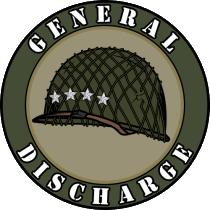
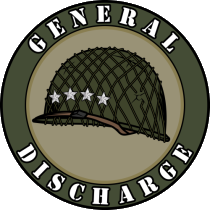

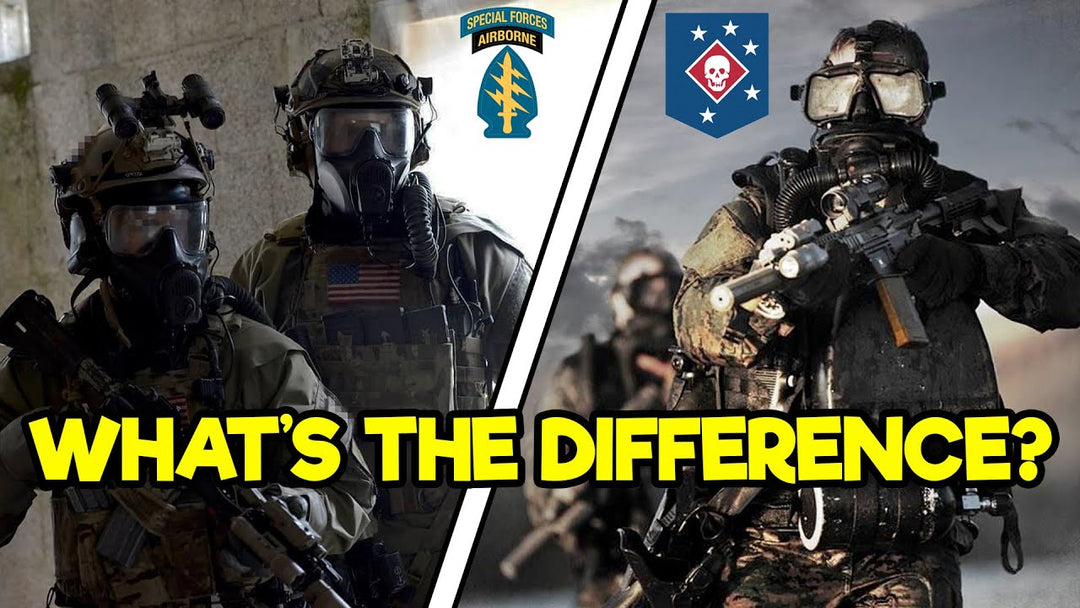
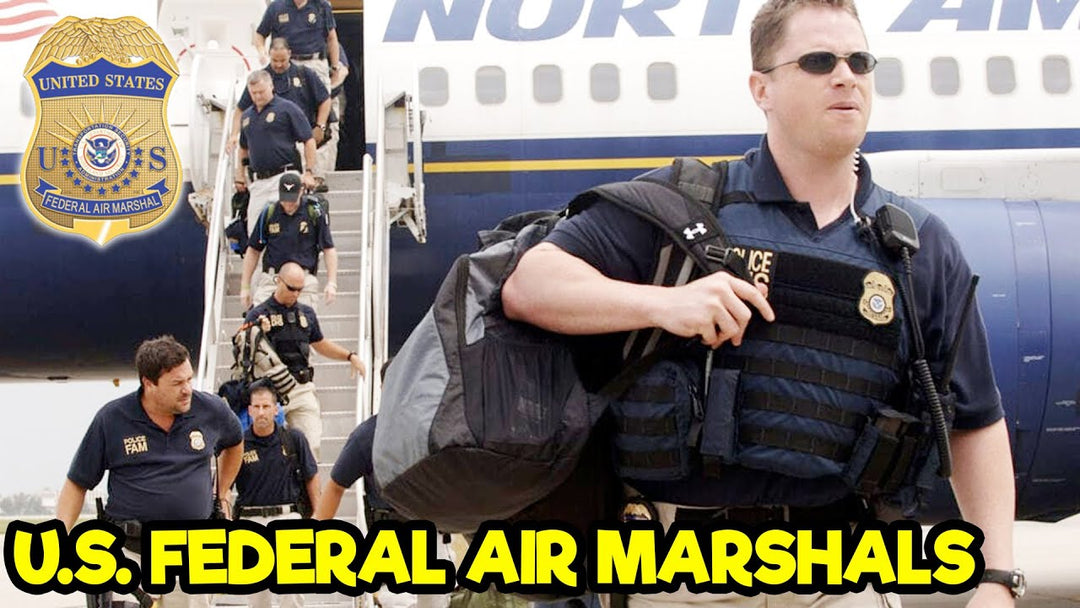
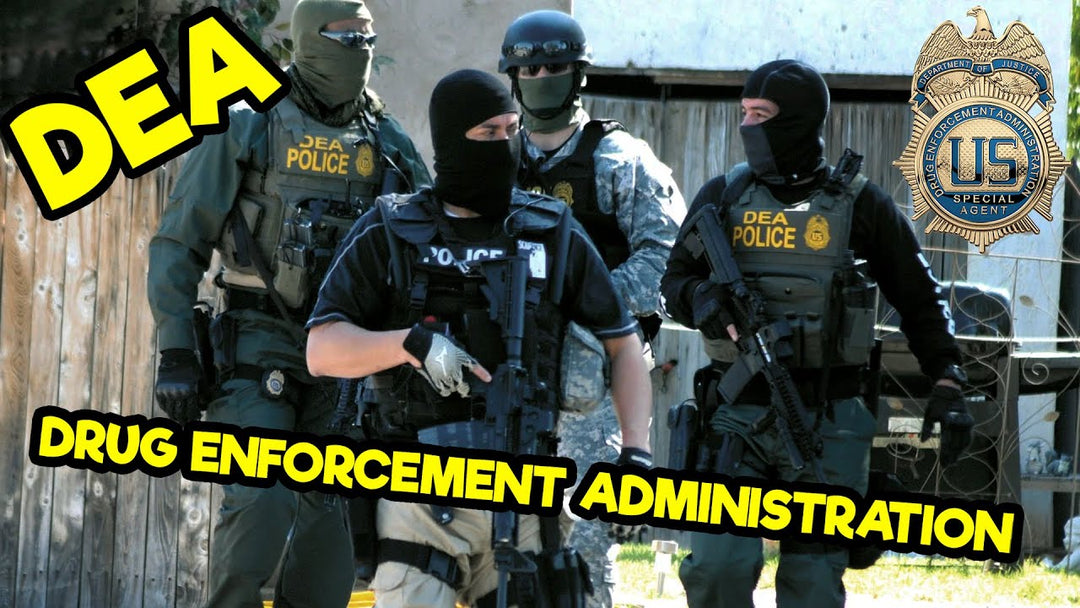
Leave a comment